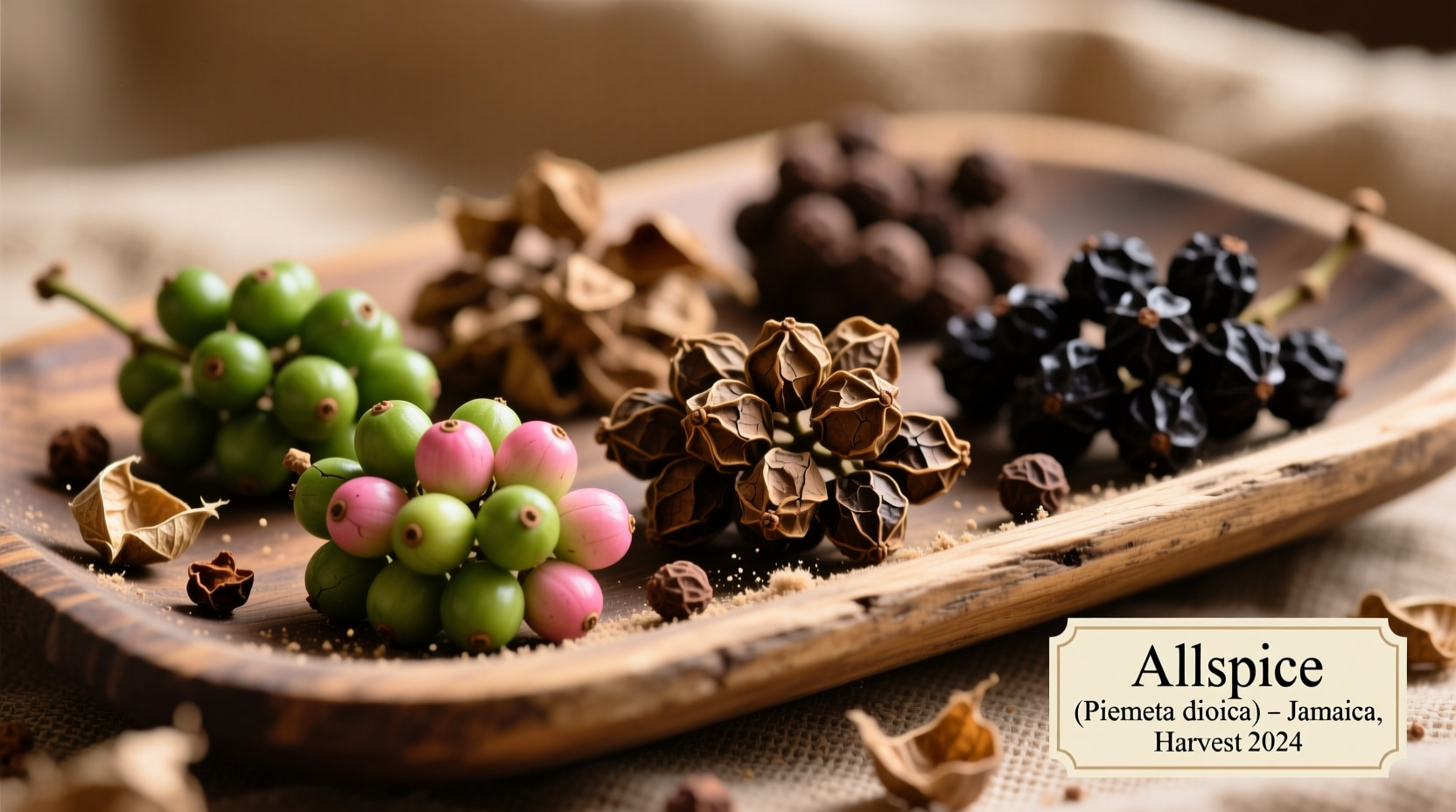The Surprising Truth About Allspice
Many home cooks mistakenly believe allspice is a pre-mixed blend of various spices. This common misconception stems from its complex flavor profile that evokes multiple warming spices. In reality, allspice comes from a single source: the dried unripe berries of the Pimenta dioica tree, native to the Caribbean islands, particularly Jamaica.
Botanical Origins and Harvesting Process
Grown primarily in Jamaica, Mexico, Honduras, and Guatemala, the allspice tree produces small green berries that turn reddish-purple when ripe. Harvesters pick these berries just before ripening, then sun-dry them until they become dark brown, wrinkled spheres about 5mm in diameter. During this drying process, the berries develop their characteristic complex aroma.
| Allspice Characteristic | Scientific Explanation | Flavor Impact |
|---|---|---|
| Eugenol (70-90%) | Same compound found in cloves | Provides sharp, spicy warmth |
| Cinnamaldehyde | Also present in cinnamon | Contributes sweet, woody notes |
| Terpenes | Volatile organic compounds | Adds citrusy, pine-like undertones |
Why It's Called Allspice: The Flavor Profile Explained
Allspice earned its name from early English explorers who noted its flavor combines elements of cinnamon, nutmeg, and cloves. Modern food science confirms this observation—chemical analysis shows allspice contains eugenol (the dominant compound in cloves), cinnamaldehyde (found in cinnamon), and terpenes that contribute nutmeg-like qualities. This unique combination creates a versatile spice that works across multiple culinary traditions.
Global Culinary Applications
Allspice plays starring roles in diverse world cuisines:
- Caribbean cooking: Essential in Jamaican jerk seasoning, meat marinades, and holiday sorrel drink
- Middle Eastern cuisine: Key component in baharat spice blend and meat stuffings
- European traditions: Used in German sauerkraut, British pickling spice, and Scandinavian baking
- American classics: Found in pumpkin pie spice, barbecue rubs, and holiday ham glazes

When Allspice Works Best (and When to Substitute)
Understanding context boundaries helps maximize allspice's potential. It shines in:
- Slow-cooked dishes where its complex flavors can develop (stews, braises)
- Sweet applications where its warm notes complement fruits (apple pie, poached pears)
- Marinades for meats (particularly pork and poultry)
However, allspice may overpower delicate dishes. In these cases, consider these substitution ratios:
- For 1 teaspoon allspice: ½ tsp cinnamon + ¼ tsp nutmeg + ¼ tsp cloves
- In baking: Equal parts ground allspice can replace pumpkin pie spice
- For savory dishes: Omit if you lack allspice—most recipes will still succeed without it
Historical Journey of Allspice
Allspice has traveled a fascinating path from indigenous use to global kitchen staple:
- Pre-1500s: Taino people of the Caribbean used pimenta berries medicinally and as a preservative
- 1509: Spanish explorers documented the spice, initially calling it "pimienta" (pepper)
- 16th century: English traders renamed it "allspice" for its combined flavor profile
- 1700s: Became essential in European pickling and preserving
- Today: Jamaica remains the largest producer of premium allspice, with Protected Geographical Indication status
Buying and Storing for Maximum Freshness
For optimal flavor, follow these professional tips:
- Buy whole berries: They retain flavor up to 2 years versus 6 months for ground spice
- Check for quality: Premium Jamaican allspice should have strong aroma when crushed
- Storage: Keep in airtight container away from light and heat
- Grinding: Use a dedicated spice grinder or mortar and pestle just before use
- Test freshness: Rub between fingers—if aroma is weak, it's time to replace
Common Questions About Allspice
Many home cooks have similar questions about this versatile spice. Here are clear, evidence-based answers to frequent queries.











 浙公网安备
33010002000092号
浙公网安备
33010002000092号 浙B2-20120091-4
浙B2-20120091-4